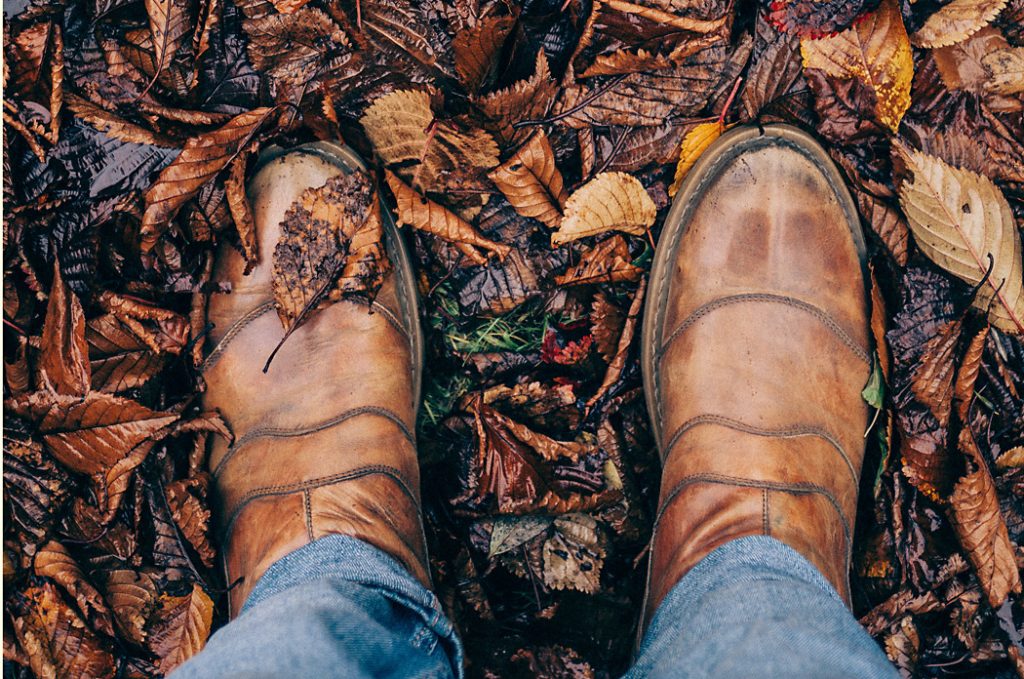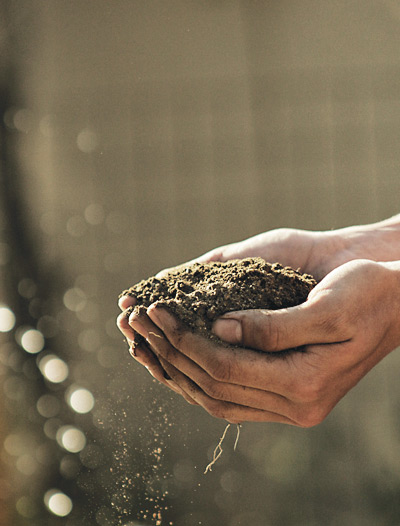
There’s a magic when you put a seed in the ground, and then you have food,” Jessica Nelson tells me. Now working towards her Ph.D. in soil science at Iowa State University, Jessica has always been enamored with soil. She describes herself as an outdoor kid, so keen to see everything her grandfather did in the garden that if he stepped backward, he would trip on her. “When we would grow food in the garden, and we would harvest and bring it all in, and we’d make a meal with it—he would be so proud,” she says. “And I would be so proud, too, that we grew everything on the table.”
Empowered by that experience, Jessica has continued to learn about soil, and she’s happy to share her knowledge with home gardeners. She sees so much hope in soil science. “That’s what drives me,” she says. “I get so excited about all the possibilities, all the potential, and I’m just learning. It’s the next frontier.”
Gardeners know the magic of what happens above ground, but below the surface, our gardens are also feeding an entire soil ecosystem, filtering water, and building soil for future generations.“It’s a whole universe, right? There’s this whole world around each plant,” Jessica tells me.
As you uproot weeds or dig potatoes, you unwittingly come into contact with a vast underground civilization called the rhizosphere. It all starts with photosynthesis. “The plant is basically crystallizing sunlight and elements from the atmosphere, and pumping that into the soil. In this liquid carbon, the plant tailors cocktails of different signals and hormones and all kinds of different compounds that will attract certain microbes into the rhizosphere. It’s creating a party around its roots.”
The party guests? Bacteria, microbes, and the nematodes and protozoa that eat them, to name a few.
“The different organisms in the soil and the plant are basically architects of the soil,” Jessica explains. “They are taking the building blocks and gluing them together and creating the structure in this whole community. . . . And fungi are helping get minerals and bringing water to the plant, and all the plants are connected via this crazy network.”
If you have a healthy soil ecosystem, she explains, plants at opposite ends of your garden are able to communicate and exchange nutrients via this underground network. Tilling, on the other hand, destroys the soil structure and devastates microbial and fungal populations.

When you must loosen the soil, use a broadfork to create larger blocks of earth. This helps to break up the soil for deeper water infiltration without destroying the soil structure. It’s also best to let the roots of this year’s annuals decompose in place over winter. “There are all kinds of little ecosystems here,” she explains, “all kinds of places for the microbes to hide and play and eat.”
Microbial soil activity peaks in winter, while the above-ground garden is dormant, so fall is a good time to compost and minerals into your beds. “It was really important as a kid to understand that, you know, it’s not just about taking, but it’s about giving,” Jessica recalls. “When you take in the harvest from a garden, you want to make sure that you’re renewing those nutrients.”
Jessica’s grandfather, a cattle farmer, relied on manure. Jessica often uses hot compost as an ingredient, and she’s also developed blends of minerals, microbes, and fungus just for vegetable gardeners. She also recommends red wriggler worm castings, which are particularly rich in microbes.
After you’ve fed your garden in the fall, tuck it in for the winter with a thick blanket of woodchips or dried leaves. Applying 3–6 inches of mulch encourages beneficial fungus, reduces erosion, and provides shelter for the whole soil food web—everything from toads, worms, and spiders to the microscopic life of the rhizosphere.
In spring, rake the mulch back when you’re ready to plant, and once your sprouts are up, mulch around them (but not touching them) to suppress weeds and regulate soil moisture. .
“Most of the problems on the earth can be solved with soil and plants, and microbes,” Nelson says. “There’s a microbe for everything,” including toxic waste and oil spills. “We can team up with these microbes, and team up with plants, which also can help clean up toxic chemicals.”
The garden can even help reverse climate change. “A lot of the carbon in the atmosphere came from the soil, and there’s so much potential to pull it back into the soil just by growing healthy plants.”
“The soil is like the [planet’s] filtration media and a water filtering system. There’s not one drop of water that hasn’t gone through the soil at some point. There are so many ecosystem services that the soil is responsible for. So if we turn to the soil, we can solve a lot of issues.”
Jessica was not always so optimistic. The turning point came when she adopted the idea that the solution is found in the problem. “I just want to be an advocate for the soil,” she says. “Anybody can grow food and make a difference. Even if you don’t have a yard, there’s a piece of land somewhere that could use some love.”
Jessica’s love of soil has taken her across the United States to film the documentary Grow Food and to a master’s program in Scotland. She currently resides in Ames with her husband Jason and their cat Obe-Wan Kenobi. She is investigating how miscanthus roots and their rhizosphere ecosystems increase the water-holding capacity of soil at ISU. “We know more about space than soil, which is ridiculous,” she says. “We’re Earthlings.”
Jessica’s documentary, garden kits, and gardening classes can be found at GrowFoodFilm.com.
Dominica Borg currently works and learns at Pickle Creek Herbs. Her interest in agroecology has taken many forms, including planting a small perennial food forest, organizing workshops for adults, and teaching gardening and cooking classes to young people.Soi
